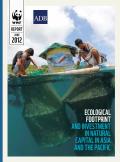Universal access to safe, reliable energy is a necessary condition for providing the poor with safe water and sanitation, for maintaining adequate standards of living, and for achieiving the Millennium Development Goals. The Asian Development Bank recognizes the importance of electricity and water access for the poor and has committed to providing such access by establishing the Energy for All and Water for All initiatives.
While broad efforts aimed at regulatory reform and increasing energy and water access may be helpful, targeting interventions, measures, and approaches are often needed to ensure that the poor benefit from these efforts. This publication identifies specific infrastructure and utility service reform measures that can be taken to advance the interests of the poor.
This paper takes stock of developments in Asian and Pacific countries as they prepare to take advantage of emerging financial incentives for forest conservation created through the “REDD+” approach for reducing carbon dioxide emissions from deforestation and forest degradation, and other actions that conserve and enhance forest carbon stocks. The paper contributes to the active dialogue on how best to organize for good knowledge management and coordination in Asia and the Pacific for implementing the REDD+ approach. Countries of the region, and especially those of Southeast Asia, have the potential to significantly contribute to mitigating global climate change through forest conservation with incentives provided through REDD+ payments. Current REDD+ arrangements and actions in the region are reviewed along with the extent to which existing multilateral and bilateral REDD+ support mechanisms are allocating their time and resources to support countries of the region. Asian and Pacific countries are receiving considerable support, and coordination is improving as all try to use the new REDD+ incentives to address the major drivers of deforestation in the region.

The widespread loss of natural ecosystems and biodiversity is much more than a conservation issue. Natural ecosystems provide socially and economically valuable services, such as food and fiber resources, clean water and climate regulation, that are fundamental to human welfare, but are often overlooked in decision-making processes.
Produced through a partnership between ADB and WWF International, this report provides examples of promising approaches for sustainably managing natural capital in the region. These are based on experiences from four important regional cooperation initiatives, which demonstrate the commitment of the participating governments to protecting the integrity of natural ecosystems while improving livelihoods and reducing poverty.
This paper firstly reviews the emerging literature on green growth, with a focus on the origin and meaning of the concept, as well as the justifications for and criticisms of the concept. The general idea of taking into account the impact of economic growth policies on the environment is not very controversial, but the possibility of simultaneously achieving conventional GDP growth and environmental protection is debated. It then discusses how China might move on to a green growth path. It summarizes a sizable literature that traces China’s rapid economic growth and the associated environmental problems to its unique and fundamental institutions, and discuss the implications of this on how China might grow more sustainably.
This study analyses trends and opportunities for trade among developing countries (i.e. South-South trade) in selected environmental goods, in order to assess the contribution such trade can make to a green economy transition. The term ‘developing countries’ includes all countries and territories listed as developing economies in the UNCTAD Handbook of Statistics (UNCTAD, 2012). The study focuses on South-South trade flows in several RE products and their components, including solar photovoltaic (PV) cells and modules, wind turbines, hydroelectric turbines, biomass feedstock, solar water heaters and solar lighting equipment, as well as other select environmental goods. The latter include water filtering and purification equipment and environmentally preferable products, such as organic agricultural goods.
